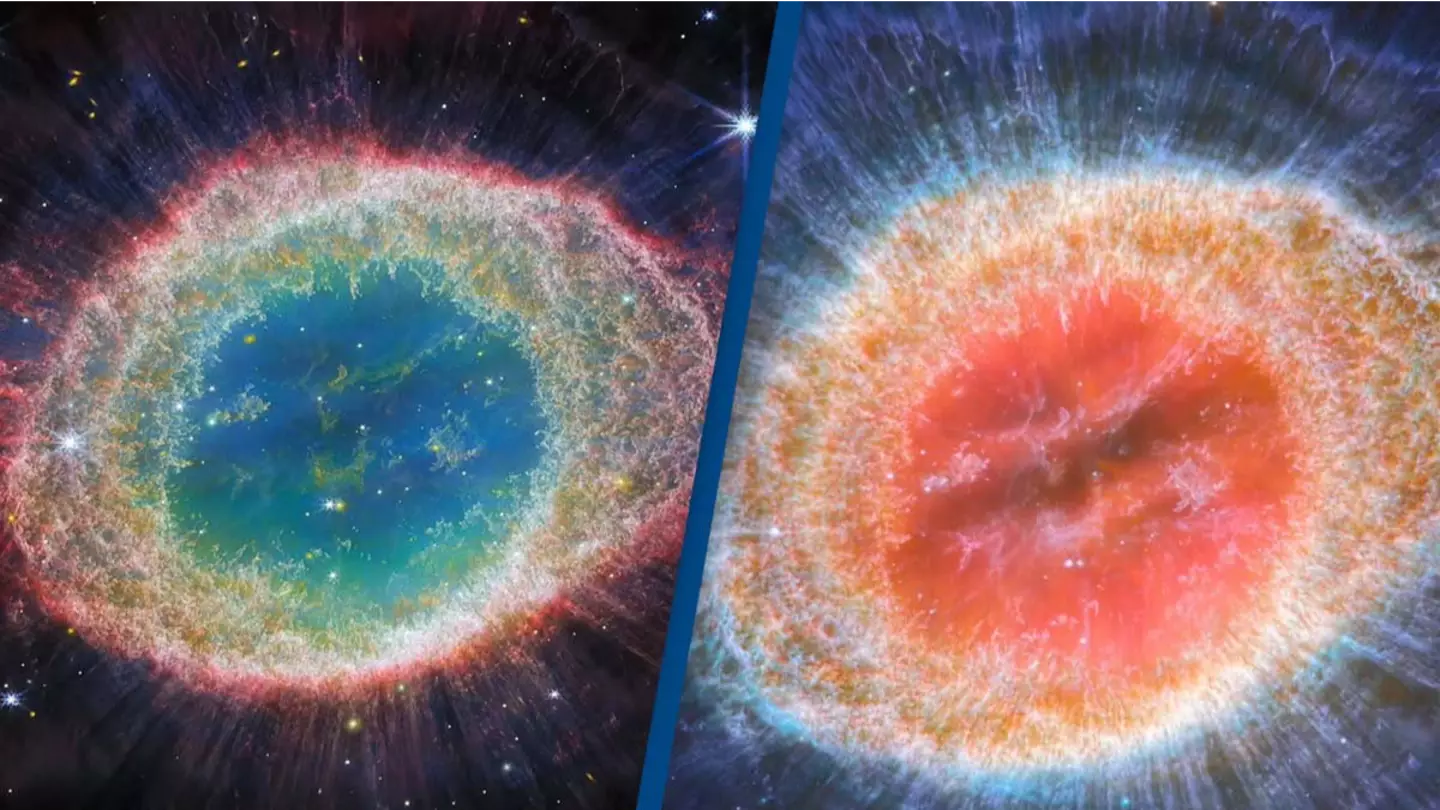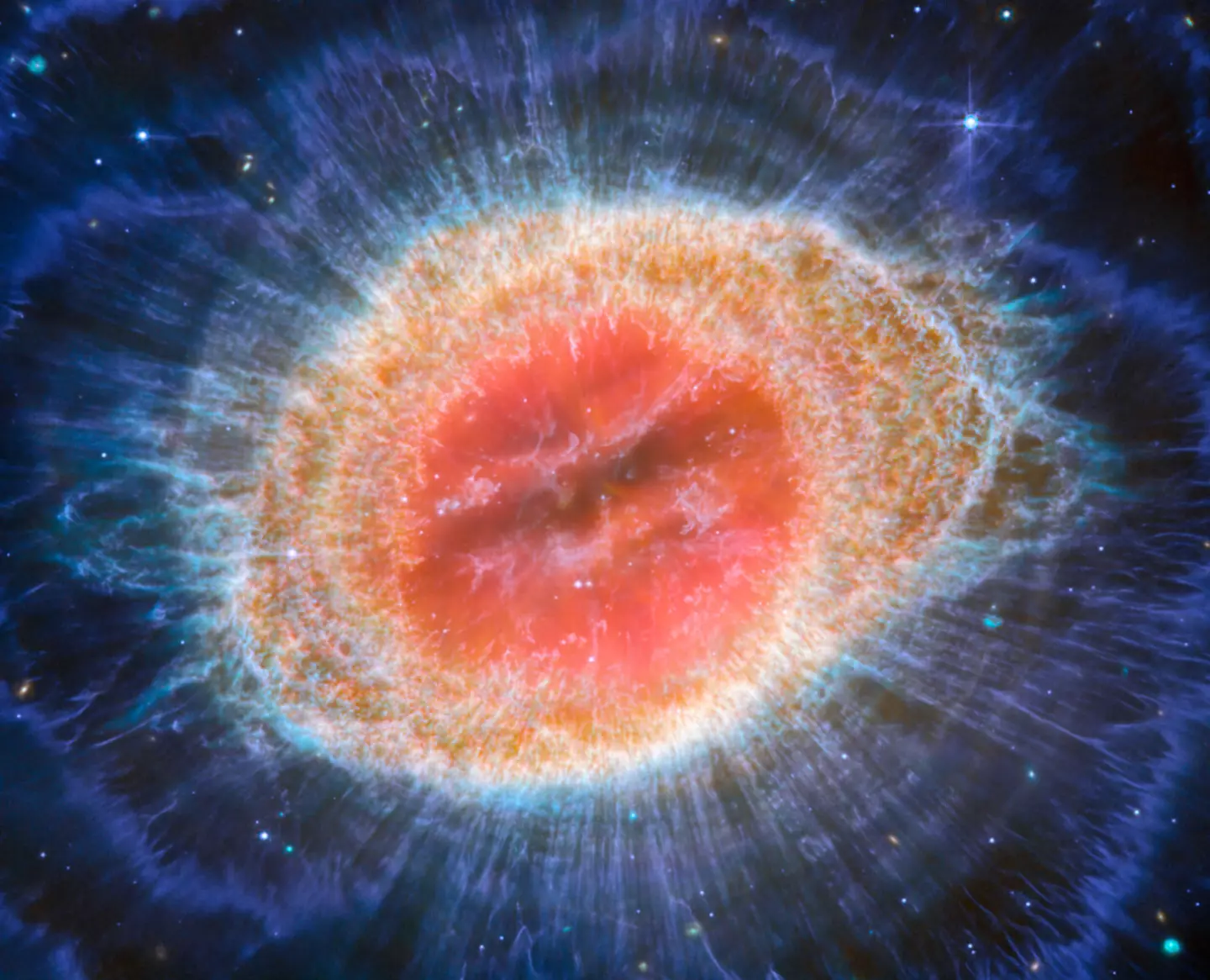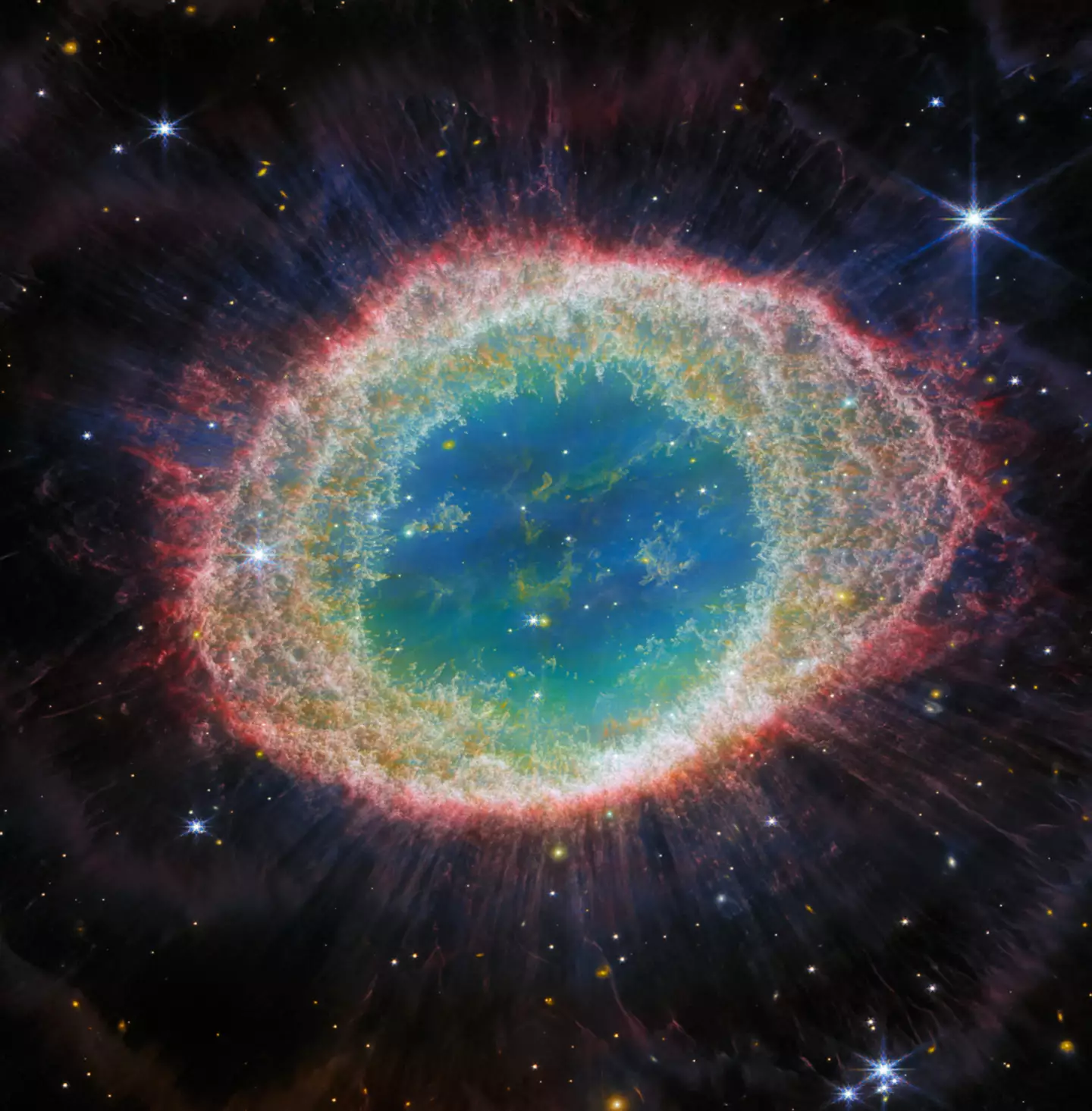
NASA has spotted new details of a dying star which gives us a glimpse into what could happen to our Sun.
But obviously don’t start panicking, we’ve literally got billions of years left.
With new images of this dying star at the centre of the Ring Nebula (2,600 light years away from us), astronomers have apparently been able to reveal structures that no previous telescope has been able to detect.
They were taken by NASA’s James Webb Space Telescope (JWST) between July and August last year.
Advert
Also known as ‘Messier 57’, the incredible object in the images was born from a dying star that expelled its outer layers into space.
And now a team of scientists led by researchers at Cardiff University say the pictures actually reveal a triple-star system.

The incredible images obtained by the JWST show around 20,000 dust clouds, known as globules, in the nebula.
Advert
Dr Roger Wesson, a research associate at the Welsh university, led the analysis.
According to NASA blogs, he said: “We can now see the subtle influence of a third, previously unknown star in the system, alongside a much more distant companion which was identified in 2021."
Wesson says that the Ring Nebula is ‘an ideal target to unravel some of the mysteries of planetary nebulae’.
You can actually often see it for yourself with binoculars from the northern hemisphere, and 'much of the southern, on a clear summer evening.
Advert
Planetary nebulae, like this Ring, form when stars with up to about eight times the mass of our Sun ‘exhaust the hydrogen in their cores and eject their outer layers’, the BBC says.

And Wesson was ‘stunned by the amount of detail’ in the images.
He went on to dissect them, saying: “Within the ring, there is a narrow band of emission from polycyclic aromatic hydrocarbons, or PAHs – complex carbon-bearing molecules that we would not expect to form in the Ring Nebula.
Advert
"Outside the bright ring, we see curious “spikes” pointing directly away from the central star, which are prominent in the infrared but were only very faintly visible in Hubble Space Telescope images.
"We think these could be due to molecules that can form in the shadows of the densest parts of the ring, where they are shielded from the direct, intense radiation from the hot central star."
Wesson added: “Planetary nebulae were once thought of as very simple objects, roughly spherical and with a single star at their centre.
"Hubble showed that they were much more complicated than that, and with these latest images JWST is revealing yet more intricate detail in these objects."
Advert
Of course, this is just the tip of the iceberg, as Wesson says that 'a little help from a binary companion' might be the key to understanding this phenomena.
Topics: NASA, Space, Science, Technology